A plump yet stunningly-hued avian, adorned in vibrant shades of fiery orange and speckled with small white dots.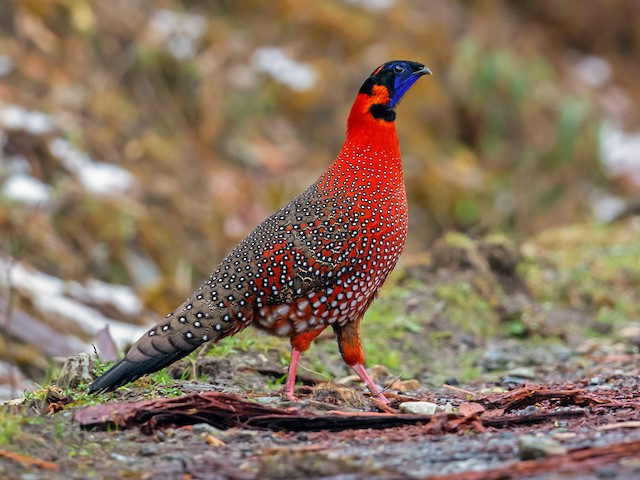
The Temminck’s tragopan, also known as Tragopan temminckii, is a stunning red pheasant that is of medium size, reaching up to 64cm in length. It has a stocky build and beautiful white-spotted plumage, which is complemented by a black bill and pink legs. The male Temminck’s Tragopan is especially bright and vibrant, with a mostly orange body adorned with whitish ocelli. Its blue face is set off by a black border, making for a truly impressive sight. Like other Tragopans, the Temminck’s Tragopan is capable of an impressive display, inflating its “horns” and bib to attract a mate.
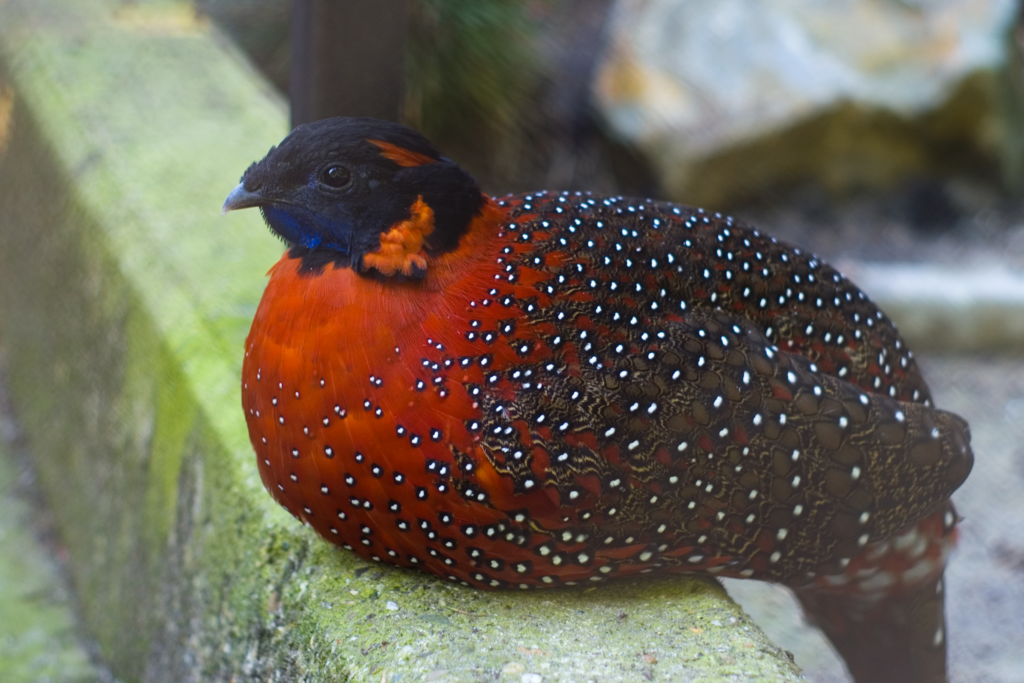
The lappet or bib of this bird is striking due to its unique red and blue coloring. The female, on the other hand, has brown feathers with white spots and beautiful blue eye skin that forms a circular pattern.
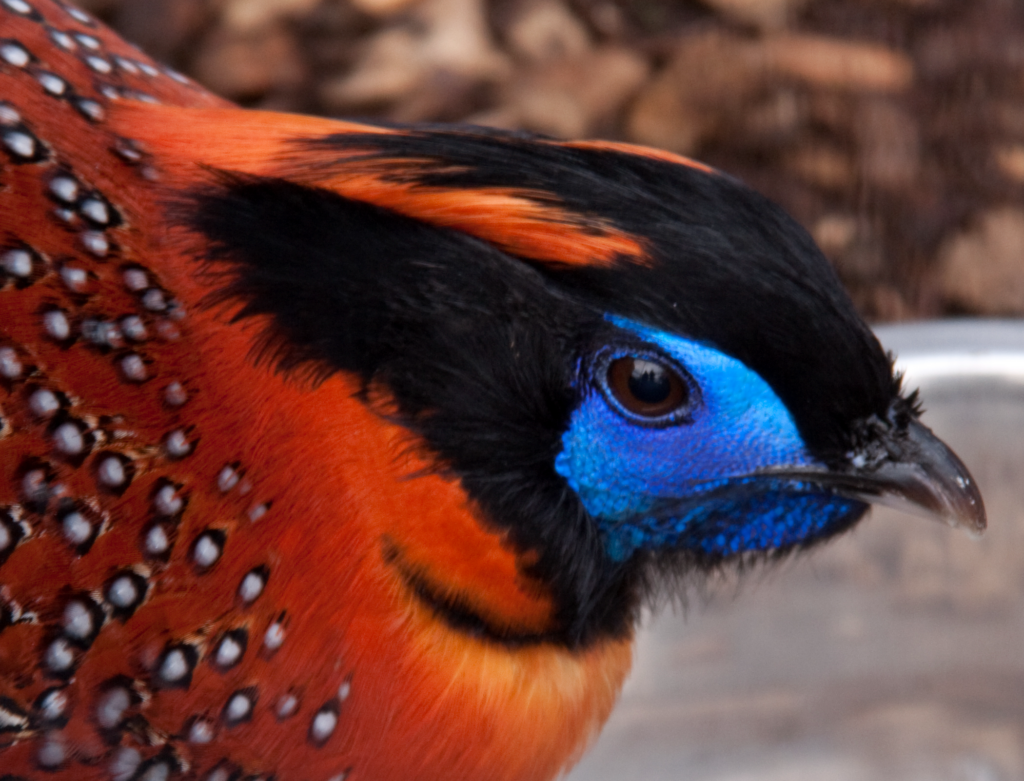
These feathered creatures reside in the elevated regions of the Eastern Himalayas, Southern Tibet, Myanmar, and adjacent locations. They can be found across a vast expanse that includes northeast India, northwest Vietnam, Tibet, and the northern provinces of China.
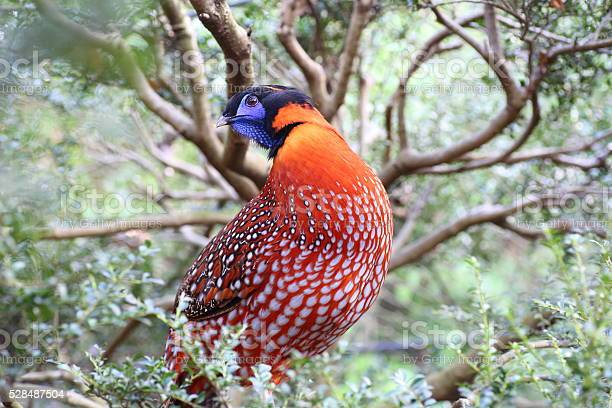
The Temminck’s Tragopan is commonly found dwelling in the vast woodlands of Northern South Asia.
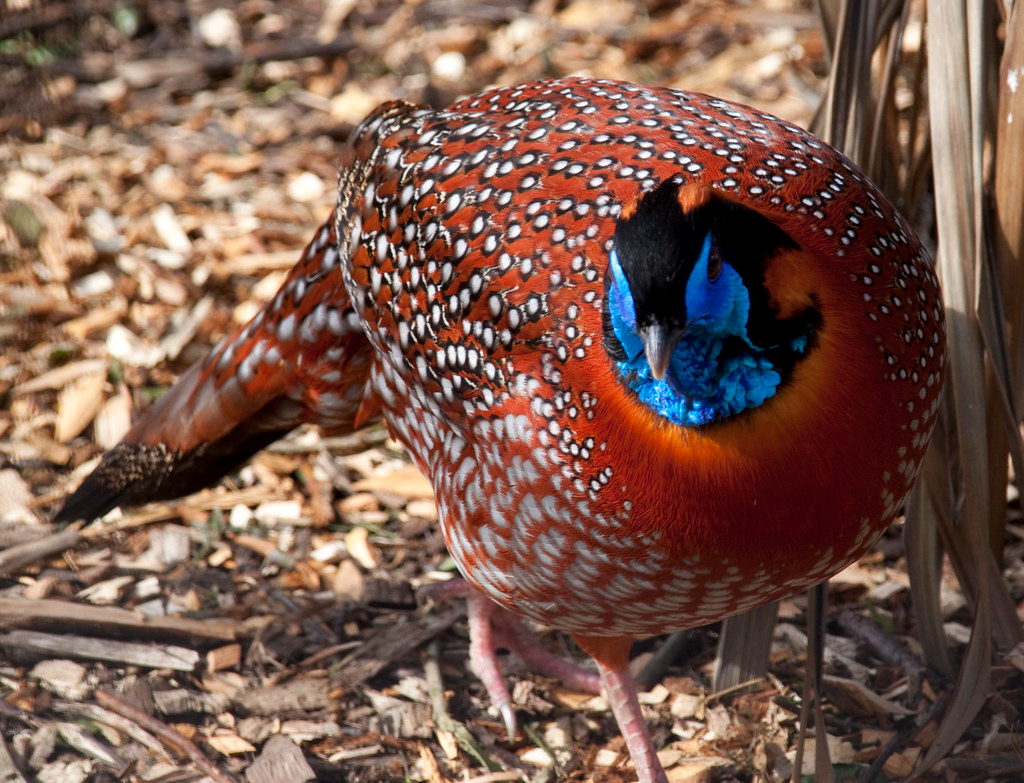
When living in their natural habitat, Temminck’s tragopan mainly feed on vegetation such as berries and grass. However, when they are kept in captivity, they are given pheasant pellets to eat, along with a limited amount of grains, fruits, and berries.
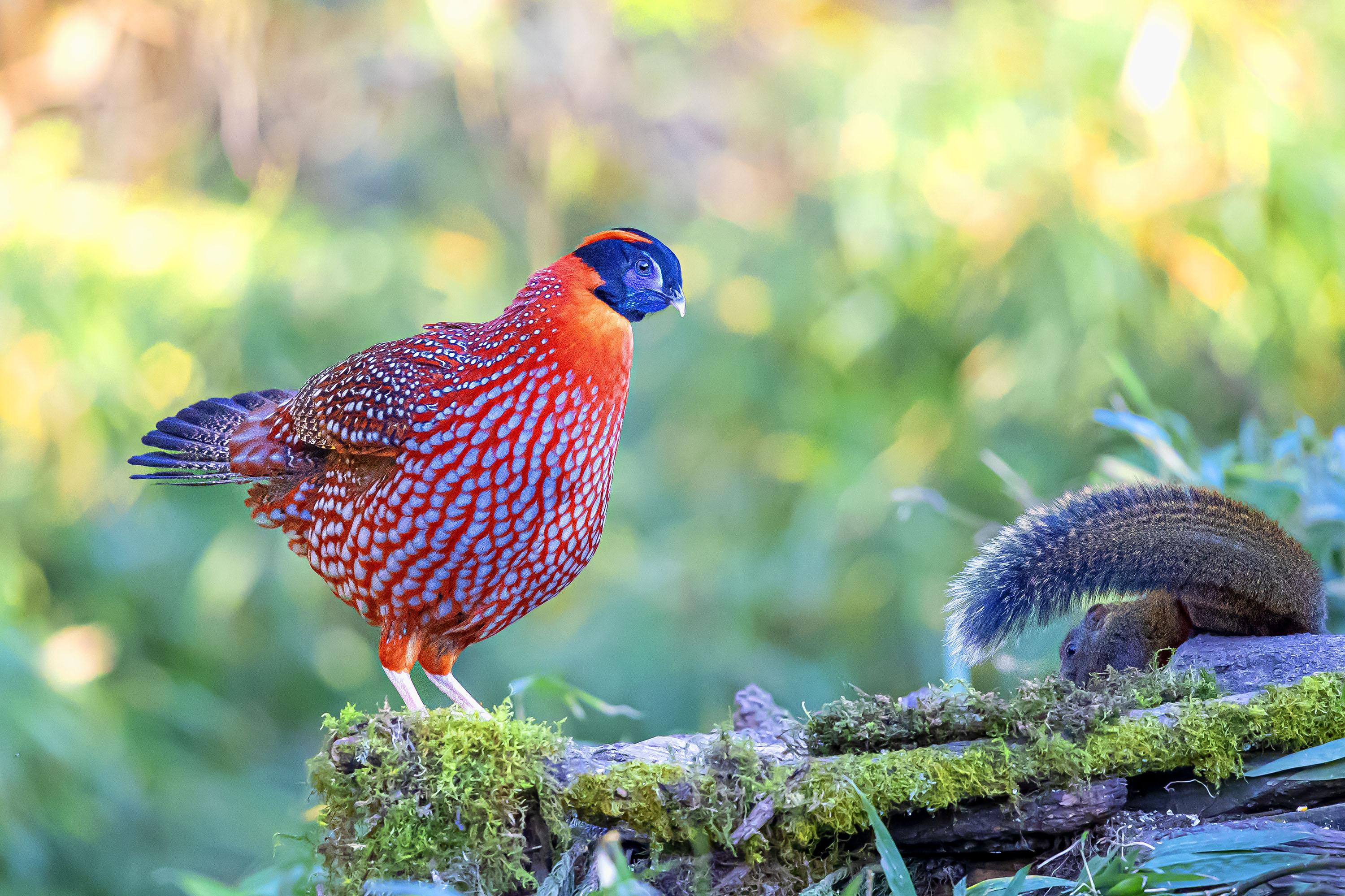
It typically takes a year for birds to begin breeding, after which the hens will start laying eggs in April. Clutches consist of 2-4 eggs, with a maximum of 12 eggs laid throughout the season. Incubation usually lasts for around 28 days.
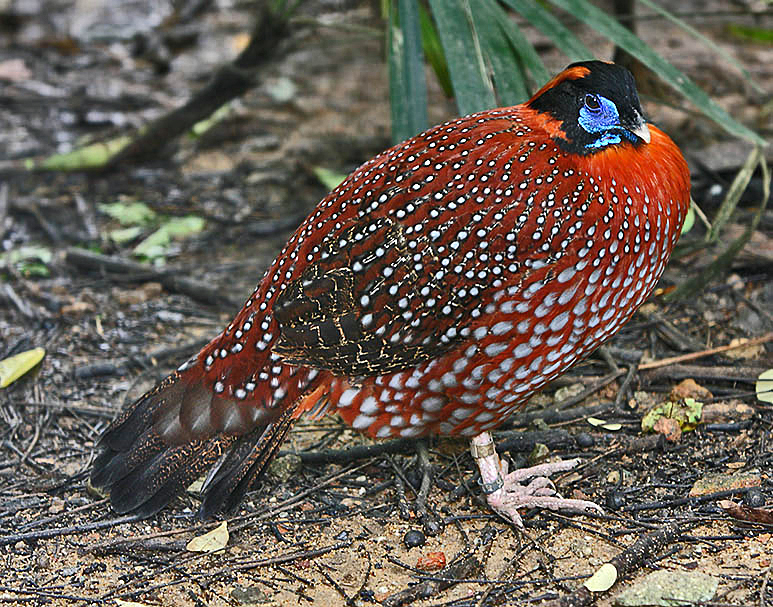
The Temminck’s tragopan is a widely distributed and frequently observed species within its expansive range, and is currently classified as being of minimal concern on the IUCN Red List of Endangered Species.
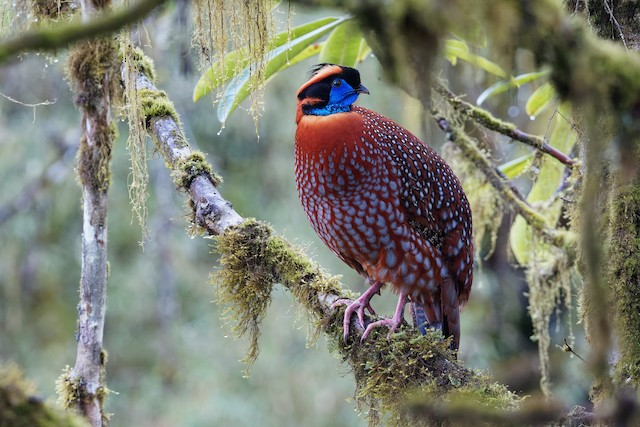
Feel free to observe this bird in the video provided below:




